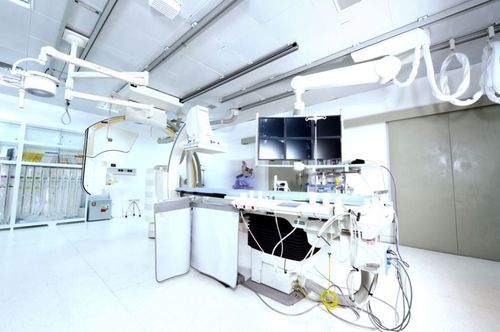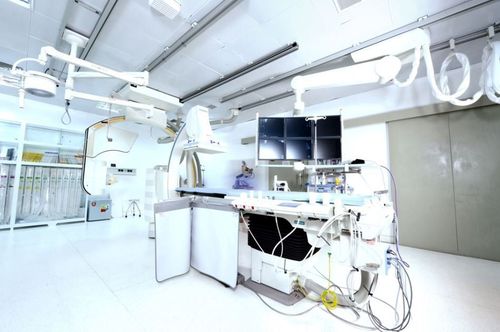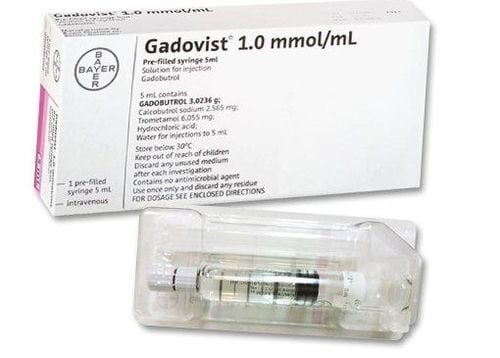This is an automatically translated article.
The article was written by Specialist I Tran Cong Trinh - Radiologist, Department of Diagnostic Imaging - Vinmec Central Park International General Hospital.Magnetic resonance angiography (MRA) of the thoracic aorta is a magnetic resonance imaging procedure that focuses on the thoracic aorta, this procedure may or may not use contrast agents depending on the individual patient. to produce detailed images of the thoracic aorta, thereby helping to detect diseases of the thoracic aorta.
1. What is magnetic resonance aorta-thoracic (MRA)?
Magnetic resonance imaging (MRI) is a process that uses a strong magnetic field, electromagnetic waves and a computer processing system to create detailed images of body parts, soft tissues, bones, and other internal structures.In some cases, the doctor will order more contrast material. Contrast used in magnetic resonance imaging is less likely to cause allergic reactions than contrast material used in CT scans. Previously, patients could have CT Scan to diagnose arterial diseases at a lower cost.
However, thoracic aortic magnetic resonance imaging has advantages such as: the patient is not exposed to X-rays like when computed tomography, which helps to reduce the risk of unwanted effects.
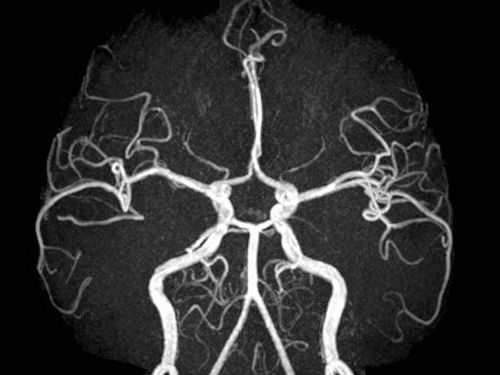
Hình ảnh chụp cộng hưởng từ mạch máu (MRA) động mạch chủ ngực
2. Indications for thoracic aorta magnetic resonance imaging for which pathology?
Magnetic resonance angiography of the thoracic aorta has a fairly wide range of uses, fulfilling its diagnostic and therapeutic role for many different diseases of the thoracic aorta.Indications for thoracic aortic magnetic resonance imaging include:
Detection of abnormalities such as aneurysms, arterial dissection in the thoracic aorta, or in the branches of the thoracic aorta. Detect atherosclerotic disease in important locations such as carotid artery, the cause of stroke. Assess the degree of stenosis and related blood vessels in vascular disease, supporting the treatment plan of coronary intervention. Diagnosis of congenital vascular abnormalities in children. An alternative to computed tomography of the thoracic aorta when iodinated contrast agents are contraindicated.
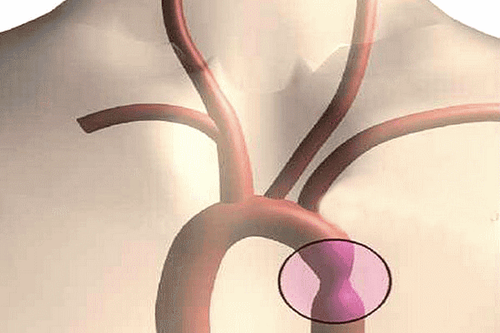
MRA giúp chẩn đoán và điều trị nhiều bệnh lý khác nhau của động mạch chủ ngực
3. Contraindications for thoracic aortic magnetic resonance imaging
In general, MRI of the thoracic aorta is a safe, non-invasive, and non-radiative technique. However, there are some cases where MRI should not be taken, such as:People with claustrophobia because during the scan, the patient is asked to lie still in the machine's compartment for 45 to 60 minutes. People with claustrophobia may find it difficult to cooperate. The patient harbors foreign bodies inside the body, including: pacemakers, cochlear implants, and certain types of clips used to treat brain aneurysms. Magnetic fields can affect the operation of these devices and conversely they can be the cause of image quality degradation. New-generation artificial substitutes are often provided by the manufacturer with a description of the risks associated with MRI in their manuals. Patients need to carefully discuss with their doctor before deciding to perform.

Chống chỉ định chụp cộng hưởng từ chủ ngực với các bệnh nhân chứa dị vật trong cơ thể
4. Procedure for performing thoracic aortic magnetic resonance imaging
MRI of the thoracic aorta should be performed according to the procedure to ensure the safety of the patient as well as the effectiveness of the device, including the following steps:Explain to the patient how to perform the procedure. present, the risk of thoracic aorta magnetic resonance imaging. Instruct the patient not to fast before the scan. Extract information from patients to rule out contraindications. Patients and relatives entering the MRI room are asked to remove jewelry before entering. During the imaging process, the patient needs to follow the technician's instructions such as keeping the posture, inhale, exhale, .. When the machine is operating, it will make a lot of noise, so the patient is usually equipped with noise-cancelling equipment such as earpads or noise-cancelling headphones Total shooting time may take 45 to 60 minutes. Vinmec International General Hospital with a system of modern facilities, medical equipment and a team of experts and doctors with many years of experience in examination and treatment, patients can rest assured that they will be examined and treated with confidence. treatment at the Hospital.
To register for examination and treatment at Vinmec International General Hospital, you can contact Vinmec Health System nationwide, or register online HERE.






